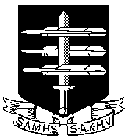

 The South African
The South African
by Emilio Coccia
Address to SAMHS Jhb branch on 13 May 2010
- The sports in the camps played a major role in keeping the POW's physically fit and occupied. There were at least 25 football fields, 10 athletic fields and 28 major football teams.
- Schools had also a top place in Col.Prinsloo's vision. Several of them were built, and 9 000 men were taught their basic literacy. The 150 Italian teachers (all POWs) also prepared hundreds of hand printed textbooks, not limited to primary school but also covering specialized disciplines (electrical eng., agronomy, science, physics etc) .
- In the Arts and Crafts, hundreds and thousands of small objects/furniture, paintings, buildings, etc. were produced of a very high standard at the H F Prinsloo Vocational Training Centre.
- Music and theatre performances also became part of everyday life. The POW's built 16 theatres (12 covered and 4 open-air) in which 18 different casts could perform.
- 22 Orchestras played classic and light music every week and a military band of up to 94 instruments would set the tempo on major occasions.
- Starting from June 1942, about 25 000 POW's were allowed to leave the camp as Outside Employees, benefiting over 5 000 farmers who needed very cheap, but skilled labourers.
- From 1942 till 1945 Italian POW's were also employed by various Gov. Dept.s (Roads, Forestry, Land and Water Affaires) for the building of mountain passes and the establishment of land settlements:
- Du Toit's Kloof (Huguenot) Pass: Nov. '42/0ct. '45 - 1 200 (up to 1 508) POWs;
- Montague (Outeniqua) Pass: Nov. '42/Aug.'45 - 500 (up to 1 041) POWs;
(UNDOCUMENTED: Sir Lowrys', Bainskloof, Hou[w] Hoek, Tradow Passes + Chapmans Peak and Tom Jenkins Drives. Camps opened in the vicinity to carry out improvements).
- The POWs who died in S.A. are buried in 3 War Cemeteries:
[The number of deaths] - 312 [from a total of 109 000 POWs is a] low ratio, signifying the fair treatment by the Camp authorities.
This, combined to the acquaintance, sometime the friendship, with their employers and their families, made the POW want to stay. About 870 of them were allowed to remain in the Union after the war, while several thousand immigrated back to South Africa in the early 1950's, thus contributing to the cultural, social and structural development of this Country.
Return to Society's Home page
South African Military History Society / scribe@samilitaryhistory.org